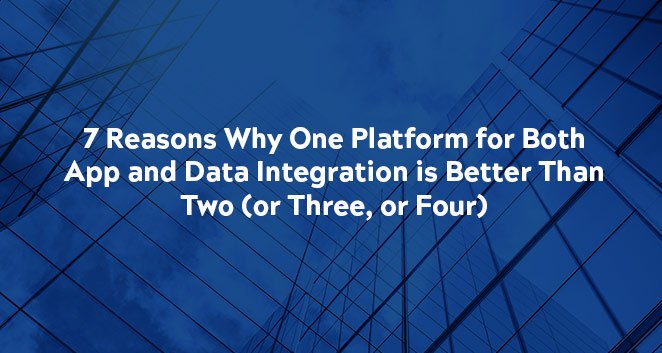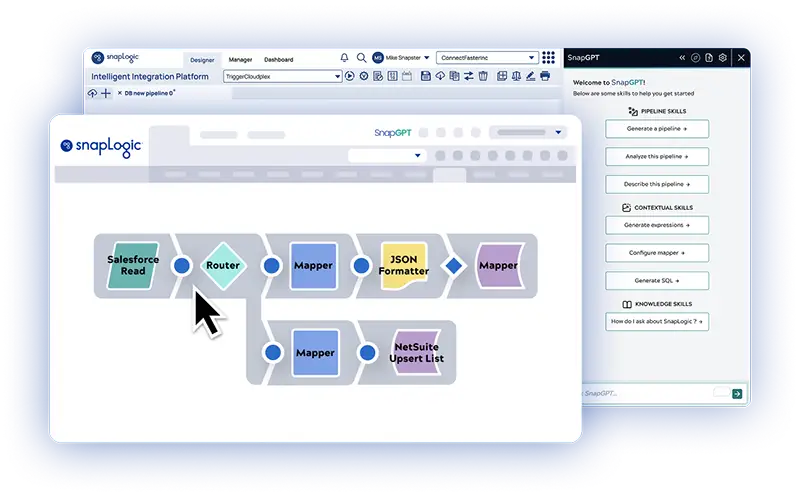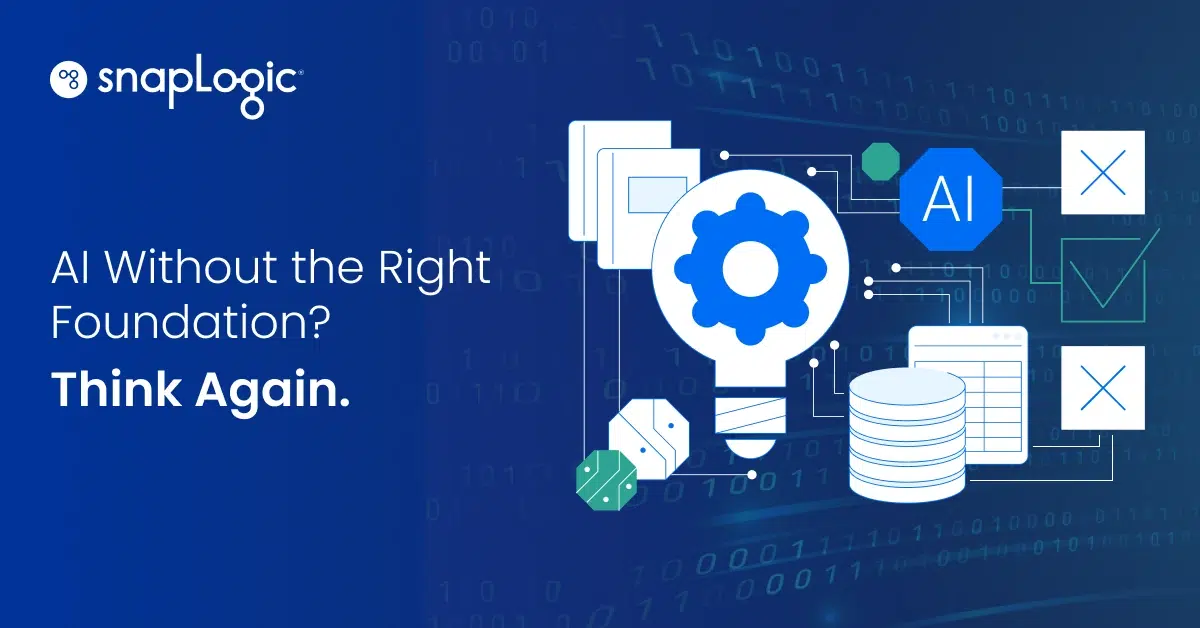Your business runs on hundreds of workflows and backend processes. Your customers and employees depend on integrated applications for seamless, connected experiences. No doubt you are automating everything you can — or planning to — and looking at the most efficient way to move data faster, glean useful analytics, and deliver exceptional results.
An intelligent integration platform is the best solution to speed up automation and you’re evaluating which one to use for data integration and which one to use for application integration. Or, you’re working with legacy integration solutions and multiple tools that keep everything (fingers crossed) flowing.
Why not use one integration platform for ALL your data AND application integrations? It’s a good question, right?
Most integration platforms are designed to excel at either data or applications, but few can do both well. Those that can, however, offer some major benefits — not just to the business, but in making your daily work life a heck of a lot easier.
Here are seven reasons to choose an integration platform that does both:
- Speed to market. The faster you can connect your data and applications, and automate the integration process everywhere across the org, the faster you can get to market. Multiple integration tools slow your business down and there’s no way they can compete with the speed of having one platform that does everything you need.
- Lower costs. Many organizations have a handful of integration platforms each focused on making crucial connections, but still siloed from one another. One platform that handles both data and application integration simplifies integration everywhere in the org, reduces costs, and improves outcomes.
- Analytics embedded in the process. Digital transformation and automation require continual analytics at every touchpoint to inform decision-making and more targeted business outcomes. If you’re running separate analytics tools at various data points, you’re missing an opportunity to layer real-time analytics directly on top of the application process, and you’re having to juggle siloed tools with numerous custom integrations. You cannot have the confidence that comes from knowing that one platform has all your analytics covered at every point and you have visibility wherever the user is in the process.
- Holistic customer view. Similarly, siloed data makes it really hard to be sure you’re getting the customer data and insights needed to make the right customer experience decisions. One platform delivers a single view of the customer and of data across the entire enterprise, with dashboards that make it easy to see everything that matters.
- Reduced errors. Not only does it cost more to have multiple platforms, but it creates the potential for more breakdowns — not to mention the headache of having to manage all these platforms and keep them optimized. One platform reduces errors, eliminates data handoff issues between multiple platforms, and makes data more consistent throughout the enterprise. This automatically boosts security and compliance, too.
- Real-time data. You need real-time data to make impactful business decisions. Schema replication, CDC, triggered, or real-time jobs from a queue (Kafka) are often used to achieve enterprise automation. Using multiple tools to move data makes the process less real-time as a whole. A single integration platform that continually draws on real-time data and offers baked-in analytics gives you the confidence to know you’re making decisions based on the most current data. It also creates the visibility needed to switch business processes in an instant when disruption or market changes require.
- Less training, faster productivity. How much time do your employees spend training on multiple tools? By using one integration platform, you can train people once and those skills can be used across the entire business, at scale. No more time wasted training and retraining on multiple platforms that could be spent on innovation.
You’ll meet your automation goals much faster with a single integration platform that handles both data and application integration. In a world where you have to compete on customer experience and speed to market, why struggle with multiple platforms when you can use just one?
Learn how the SnapLogic platform can speed up innovation at your org. Request a demo or contact us today.











